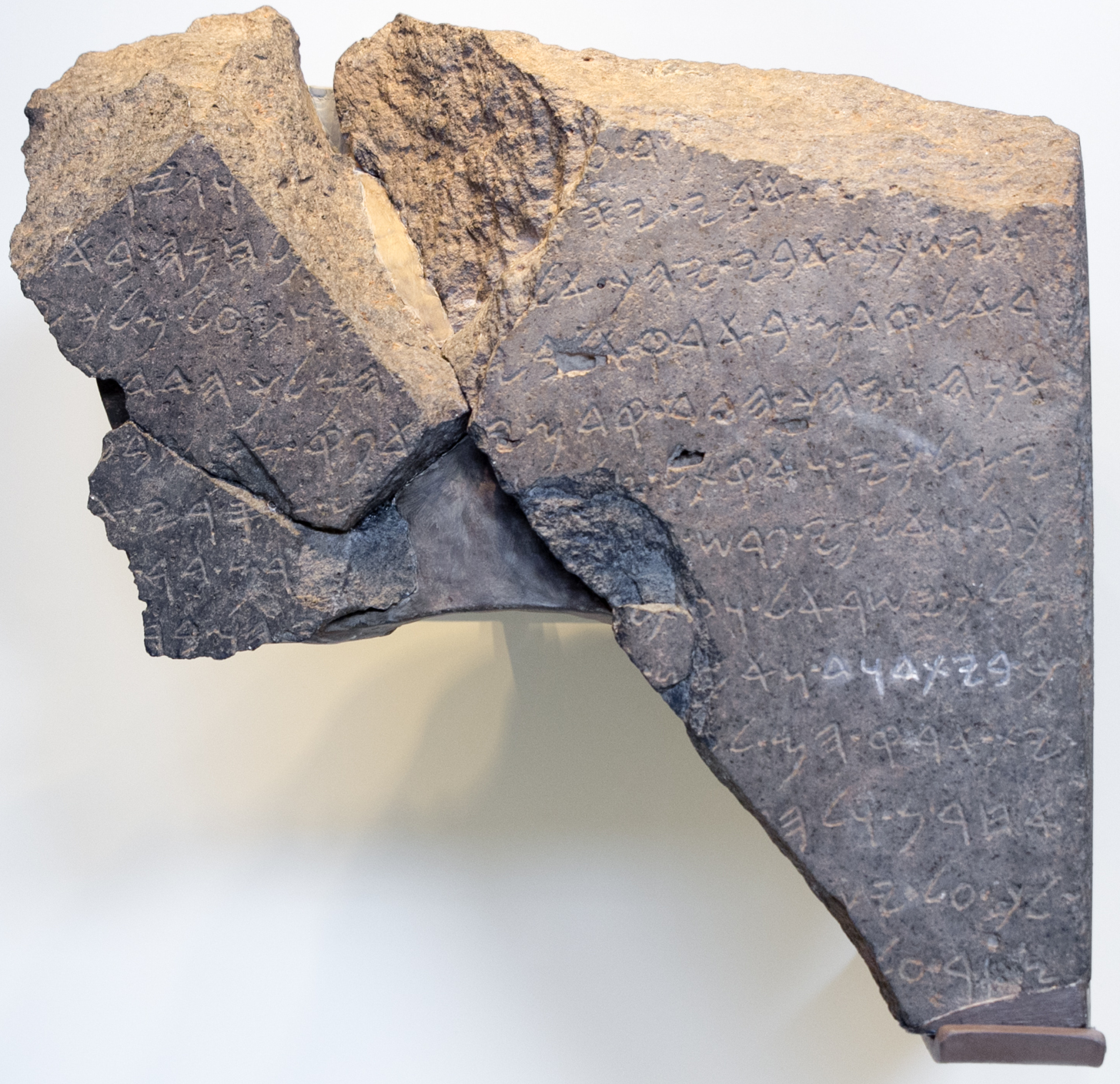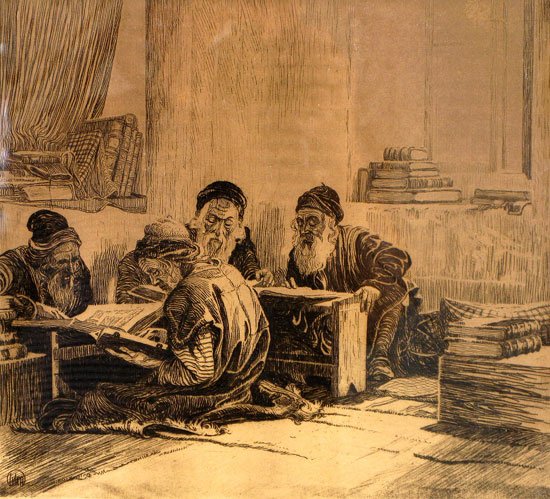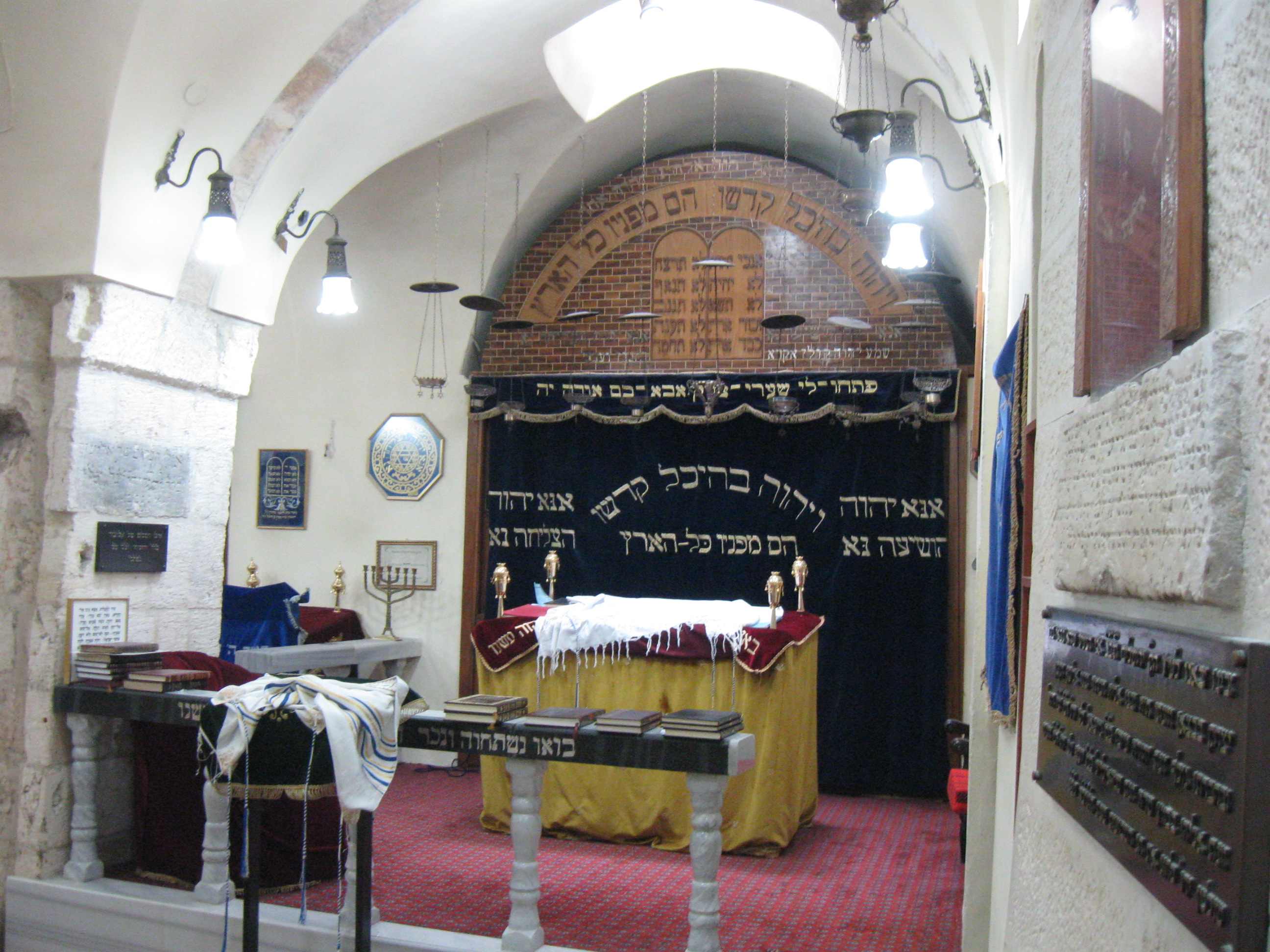|
Exilarchs
The exilarch was the leader of the Jewish community in Mesopotamia (modern-day Iraq) during the era of the Parthians, Sasanians and Abbasid Caliphate up until the Mongol invasion of Baghdad in 1258, with intermittent gaps due to ongoing political developments. The exilarch was regarded by the Jewish community as the royal heir of the House of David and held a place of prominence as both a rabbinical authority and as a noble within the Persian and Arab court. Within the Sasanian Empire, the exilarch was the political equivalent of the '' Catholicos'' of the Christian Church of the East and was thus responsible for community-specific organizational tasks such as running the rabbinical courts, collecting taxes from Jewish communities, supervising and providing financing for the Talmudic academies in Babylonia, and the charitable re-distribution and financial assistance to needy members of the exile community. The position of exilarch was hereditary, held in continuity by a fami ... [...More Info...] [...Related Items...] OR: [Wikipedia] [Google] [Baidu] |
Davidic Line
The Davidic line refers to the descendants of David, who established the House of David ( ) in the Kingdom of Israel (united monarchy), Kingdom of Israel and the Kingdom of Judah. In Judaism, the lineage is based on texts from the Hebrew Bible, as well as on later Jewish history, Jewish traditions. According to the biblical narrative, David of the tribe of Judah engaged in a protracted conflict with Ish-bosheth of the Tribe of Benjamin after the latter succeeded his father Saul to become the second king of an amalgamated History of ancient Israel and Judah, Israel and Judah. Amidst this struggle, Yahweh had sent his prophet Samuel to anoint David as the true king of the Israelites. Following Ish-bosheth's assassination at the hands of his own army captains, David officially acceded to the throne around 1010 BCE, replacing the House of Saul with his own and becoming the Israelite third king. He was succeeded by his son Solomon, whose mother was Bathsheba. Solomon's death led to ... [...More Info...] [...Related Items...] OR: [Wikipedia] [Google] [Baidu] |
Exilarch Huna
The exilarch was the leader of the Jewish community in Mesopotamia (modern-day Iraq) during the era of the Parthians, Sasanians and Abbasid Caliphate up until the Mongol invasion of Baghdad in 1258, with intermittent gaps due to ongoing political developments. The exilarch was regarded by the Jewish community as the royal heir of the House of David and held a place of prominence as both a rabbinical authority and as a noble within the Persian and Arab court. Within the Sasanian Empire, the exilarch was the political equivalent of the '' Catholicos'' of the Christian Church of the East and was thus responsible for community-specific organizational tasks such as running the rabbinical courts, collecting taxes from Jewish communities, supervising and providing financing for the Talmudic academies in Babylonia, and the charitable re-distribution and financial assistance to needy members of the exile community. The position of exilarch was hereditary, held in continuity by a fa ... [...More Info...] [...Related Items...] OR: [Wikipedia] [Google] [Baidu] |
Mar-Zutra II
Mar-Zutra II () was a Jewish Exilarch who led a revolt against the Sasanian rulers in 495 CE and achieved seven years of political independence in Mahoza. Mar-Zutra II became Exilarch of the Jewish community in Babylon at the age of fifteen in 483 CE, twelve years before the revolt. After King Kavadh I had denied Jews the right to organize their own militia, Mar-Zutra took advantage of the confusion into which Mazdak's communistic attempts had plunged Persia and led a successful military revolt that achieved political independence for the Jews of Mahoza. The Jewish state lasted seven years, until 502 CE. Mar-Zutra II remained exarch until 520. He had a son named Mar-Zutra III. The latter did not attain to the office of Exilarch, but returned to the Land of Israel, where he became head of the Academy of Tiberias Tiberias ( ; , ; ) is a city on the western shore of the Sea of Galilee in northern Israel. A major Jewish center during Late Antiquity, it has been considered ... [...More Info...] [...Related Items...] OR: [Wikipedia] [Google] [Baidu] |
Aramaic Language
Aramaic (; ) is a Northwest Semitic languages, Northwest Semitic language that originated in the ancient Syria (region), region of Syria and quickly spread to Mesopotamia, the southern Levant, Sinai Peninsula, Sinai, Southeastern Anatolia Region, southeastern Anatolia, and Eastern Arabia, where it has been continually written and spoken in different variety (linguistics), varieties for over three thousand years. Aramaic served as a language of public life and administration of ancient kingdoms and empires, particularly the Neo-Assyrian Empire, Neo-Babylonian Empire, and Achaemenid Empire, and also as a language of divine worship and religious study within Judaism, Christianity, and Gnosticism. Several Neo-Aramaic languages, modern varieties of Aramaic are still spoken. The modern Eastern Aramaic, eastern branch is spoken by Assyrian people, Assyrians, Mandaeans, Mandeans, and Mizrahi Jews.{{cite book , last1=Huehnergard , first1=John , author-link1=John Huehnergard , last2=Rub ... [...More Info...] [...Related Items...] OR: [Wikipedia] [Google] [Baidu] |
Hebrew Language
Hebrew (; ''ʿÎbrit'') is a Northwest Semitic language within the Afroasiatic language family. A regional dialect of the Canaanite languages, it was natively spoken by the Israelites and remained in regular use as a first language until after 200 CE and as the liturgical language of Judaism (since the Second Temple period) and Samaritanism. The language was revived as a spoken language in the 19th century, and is the only successful large-scale example of linguistic revival. It is the only Canaanite language, as well as one of only two Northwest Semitic languages, with the other being Aramaic, still spoken today. The earliest examples of written Paleo-Hebrew date back to the 10th century BCE. Nearly all of the Hebrew Bible is written in Biblical Hebrew, with much of its present form in the dialect that scholars believe flourished around the 6th century BCE, during the time of the Babylonian captivity. For this reason, Hebrew has been referred to by Jews as '' ... [...More Info...] [...Related Items...] OR: [Wikipedia] [Google] [Baidu] |
Calque
In linguistics, a calque () or loan translation is a word or phrase borrowed from another language by literal word-for-word or root-for-root translation. When used as a verb, "to calque" means to borrow a word or phrase from another language while translating its components, so as to create a new word or phrase ( lexeme) in the target language. For instance, the English word ''skyscraper'' has been calqued in dozens of other languages, combining words for "sky" and "scrape" in each language, as for example in German, in Portuguese, in Dutch, in Spanish, in Italian, in Turkish, and ''matenrō'' in Japanese. Calques, like direct borrowings, often function as linguistic gap-fillers, emerging when a language lacks existing vocabulary to express new ideas, technologies, or objects. This phenomenon is widespread and is often attributed to the shared conceptual frameworks across human languages. Speakers of different languages tend to perceive the world through common categori ... [...More Info...] [...Related Items...] OR: [Wikipedia] [Google] [Baidu] |
Hybrid Word
A hybrid word or hybridism is a word that etymologically derives from at least two languages. Such words are a type of macaronic language. Common hybrids The most common form of hybrid word in English combines Latin and Greek parts. Since many prefixes and suffixes in English are of Latin or Greek etymology, it is straightforward to add a prefix or suffix from one language to an English word that comes from a different language, thus creating a hybrid word. Hybridisms were formerly often considered to be barbarisms., ''s.v.'' 'barbarism' English examples * Antacid – from Greek () 'against' and Latin acidus 'acid'; this term dates back to 1732. * Aquaphobia – from Latin 'water' and Greek () 'fear'; this term is distinguished from the non-hybrid word '' hydrophobia'', a historical term for rabies and one of its main symptoms. * Asexual – from Greek prefix 'without' and the Latin ' sex' * Automobile – a wheeled passenger vehicle, from Greek () 'self' and Lat ... [...More Info...] [...Related Items...] OR: [Wikipedia] [Google] [Baidu] |
Rabbinic Judaism
Rabbinic Judaism (), also called Rabbinism, Rabbinicism, Rabbanite Judaism, or Talmudic Judaism, is rooted in the many forms of Judaism that coexisted and together formed Second Temple Judaism in the land of Israel, giving birth to classical rabbinic Judaism, which flourished from the 1st century CE to the final redaction of the Babylonian Talmud in c. 600. Mainly developing after the destruction of the Jerusalem Temple (70 CE), it eventually became the normative form of Judaism. Rabbinic Judaism has been an orthodox form of Judaism since the 6th century CE, after the codification of the Babylonian Talmud. It has its roots in the Pharisaic school of Second Temple Judaism and is based on the belief that Moses at Mount Sinai received both the Written Torah (''Torah she-be-Khetav'') and the Oral Torah (''Torah she-be-al Peh'') from God. The Oral Torah explains the Written Torah, and it was the rabbis claimed that it was them who possessed this memorized and orally transmitte ... [...More Info...] [...Related Items...] OR: [Wikipedia] [Google] [Baidu] |
Karaite Judaism
Karaite Judaism or Karaism is a Rabbinic Judaism, non-Rabbinical Jewish religious movements, Jewish sect characterized by the recognition of the written Tanakh alone as its supreme religious text, authority in ''halakha'' (religious law) and theology. Karaites believe that all of the Mitzvah, divine commandments which were handed down to Moses by God were recorded in the written Torah without any additional Oral Torah, Oral Law or explanation. Unlike mainstream Rabbinic Judaism, which regards the Oral Torah, codified in the Talmud and subsequent works, as authoritative interpretations of the Torah, Karaite Jews do not treat the written collections of the oral tradition in the Midrash or the Talmud as binding. Karaite interpretation of the Torah strives to adhere to the plain or most obvious meaning (''peshat'') of the text; this is not necessarily the literal meaning of the text—instead, it is the meaning of the text that would have been naturally understood by the ancient He ... [...More Info...] [...Related Items...] OR: [Wikipedia] [Google] [Baidu] |
Pumbedita
Pumbedita ( ''Pūm Bəḏīṯāʾ'', "Mouth of the Bedita"See The river "Bedita" has not been identified.) was an ancient city located in modern-day Iraq. It is known for having hosted the Pumbedita Academy. History The city of Pumbedita was said to have possessed a Jewish population since the days of Second Temple of Jerusalem. The city had a large Jewish population and was famed for its Pumbedita Academy, whose scholarship, together with the city of Sura, gave rise to the Babylonian Talmud. The academy there was founded by Judah ben Ezekiel in the late third century. The academy was established after the destruction of the academy of Nehardea. Nehardea, being the capital city, was destroyed during the Persian–Palmyrian war. Location Guy Le Strange, in his geography of Mesopotamia in the Abbasid era constructed from Ibn Serapion (ca. 900), cited a possible location for Pumbedita: :The Nahr-al-Badāt was a long drainage channel taken from the left bank of the Kūfah a ... [...More Info...] [...Related Items...] OR: [Wikipedia] [Google] [Baidu] |
Sura (city)
Sura () was a city in the southern part of the area called by ancient Jewish sources Talmudic Academies in Babylonia#Geographic area, Babylonia, located east of the Euphrates. It was well-known for its agriculture, agricultural produce, which included grapes, wheat, and barley. It was also a major center of Torah scholarship and home of an important yeshiva—the Sura Academy—which, together with the yeshivas in Pumbedita and Nehardea, gave rise to the Babylonian Talmud. Location According to Sherira Gaon, Sura () was identical to the town of Mata Mehasya, which is also mentioned in the Talmud, but Mata Mehasya is cited in the Talmud many times, either as a nearby town or a suburb of Sura, and the Talmudist academy in Mata Mehasya served as a branch of Sura Academy, which was founded by Abba Arikha in the third century. A contemporary Syriac language, Syriac source describes it as a town completely inhabited by Jews, situated between al-Mada'in, Māḥōzē and al-Hirah in the ... [...More Info...] [...Related Items...] OR: [Wikipedia] [Google] [Baidu] |
Geonim
''Geonim'' (; ; also Romanization of Hebrew, transliterated Gaonim, singular Gaon) were the presidents of the two great Talmudic Academies in Babylonia, Babylonian Talmudic Academies of Sura Academy , Sura and Pumbedita Academy , Pumbedita, in the Abbasid Caliphate. They were generally accepted as the spiritual leaders of the Jewish community worldwide in the early medieval era, in contrast to the ''Resh Galuta'' (exilarch) who wielded secular authority over the Jews in Islamic lands. ''Geonim'' is the plural of (''Ga'on'') , which means "pride" or "splendor" in Biblical Hebrew and since the 19th century "genius" as in modern Hebrew language, Hebrew. As a title of a Babylonian college president it meant something like "His Excellency". The ''Geonim'' played a prominent and decisive role in the transmission and teaching of Torah and Halakha, Jewish law. They taught Talmud and decided on issues on which no ruling had been rendered during the period of the Talmud. Era The per ... [...More Info...] [...Related Items...] OR: [Wikipedia] [Google] [Baidu] |




